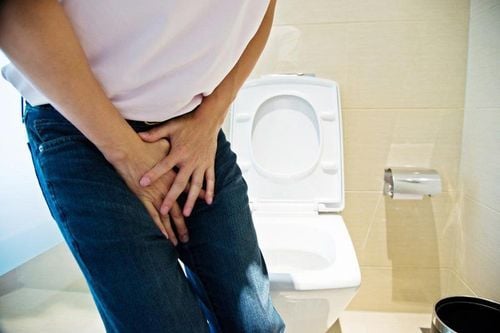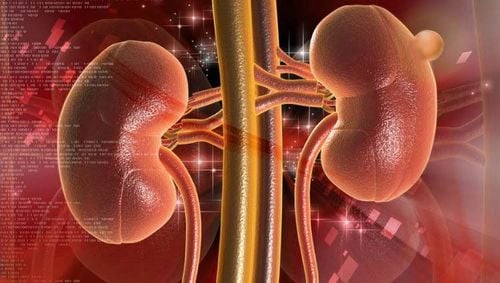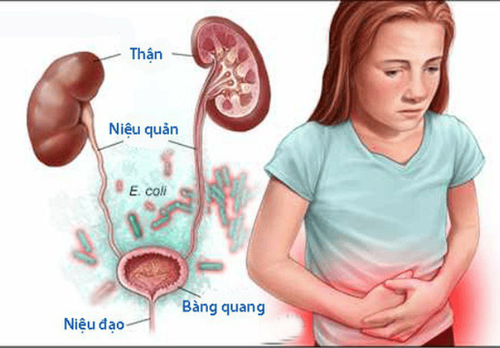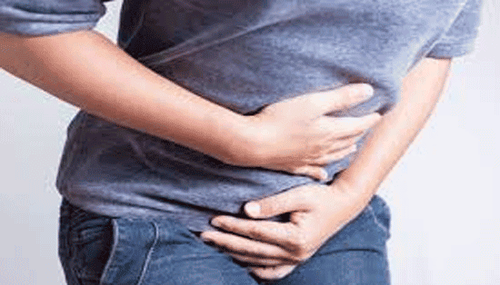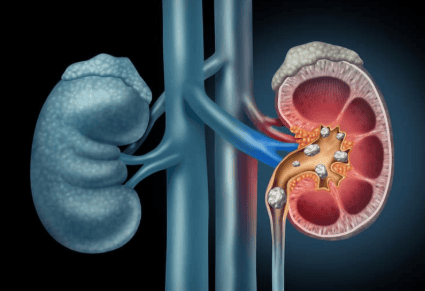This is an automatically translated article.
The article was professionally consulted with MSc Vo Thien Ngon - Urologist, Department of General Surgery, Vinmec Da Nang International Hospital.In a healthy adult, the bladder can hold up to 400-500ml of urine for a comfortable voiding. How often you urinate during the day will depend on how much excess water your body is trying to get rid of. Moreover, the problem of urination depends not only on the volume of the bladder but also on the muscle layers, which govern the nerves as well as the habits and activities of each individual.
1. Anatomy and physiology of the bladder
The normal person's bladder is pear-shaped, located in the hypogastric region and hidden behind the pubic bone. This organ will become oval when it is filled with urine. The kidneys filter blood to form urine, which passes through the ureters to the bladder for storage before being eliminated from the urethra.
At the top, the bladder has two ureter tubes inserted on either side, carrying urine from the corresponding ipsilateral renal pelvis to the bladder. At the bottom, the bladder opens into the urethra at the bladder neck. The wall of the bladder consists of 3 layers:
The outer layer is loose connective tissue, containing blood, lymph vessels and nerves The middle layer is a mass of smooth muscle fibers and elastic tissue that intertwine into a solid wall The inner layer is the epithelium lining the bladder wall
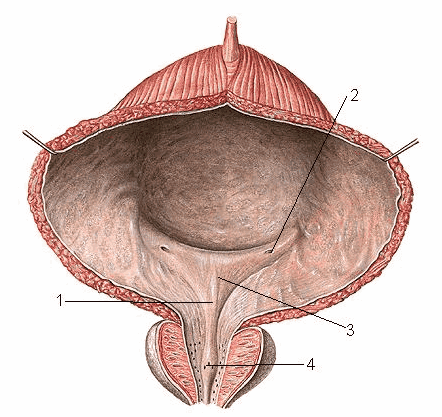
When empty, the inner wall of the bladder collapses into folds. These folds are intended to increase the volume of the bladder and disappear as the bladder fills with urine. The bladder can be distended and distended with a maximum normal capacity of 500-600ml. However, in some pathologies, the bladder can be enlarged with many times its volume and prominently under the abdominal wall observed in the lower abdomen.
At the bottom of the bladder is the neck of the bladder, which leads into the urethra, through which urine is expelled from the body. The opening and closing of the bladder is also supported by the meniscus ligaments and the striated muscles of the pelvic floor.
2. How much urine can the bladder hold?
The person's bladder is supposed to act like a reservoir, expanding when it's full and collapsing when it's empty.
The normal bladder in a healthy adult can comfortably hold up to 500ml of urine. However, a person often feels the need to urinate and urinate when this volume has just reached 300-400 ml.
Corresponding to this, the bladder filling time is between three and four hours. However, this characteristic also depends on water intake, bladder capacity of each person as well as local bladder diseases such as inflammation or systemic diseases such as heart failure, kidney failure.
3. How to correct bladder habits?
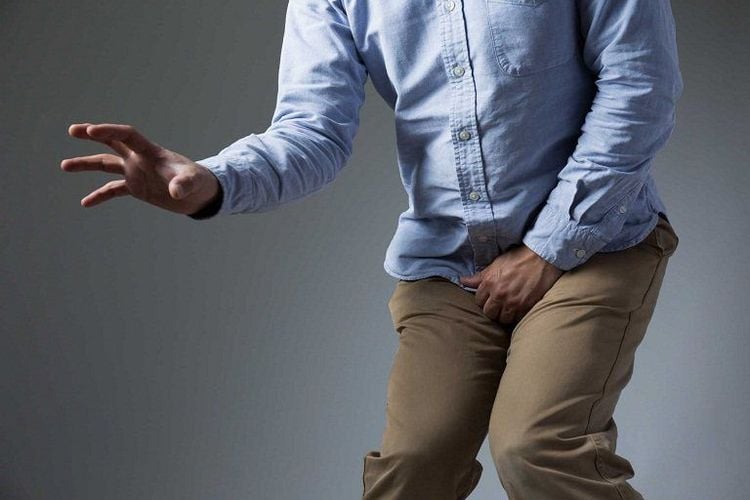
In some people, even though there is no pathology, the bladder frequently signals the need to urinate and needs to be addressed. Meanwhile, the bladder capacity can reach up to 500ml before it needs to be expelled, but the actual volume of urine for each urination is only about 100-200ml, or even the patient has a feeling of needing to urinate. just finished walking, it's called neurocysticercosis.
At this point, what needs to be done is to correct bladder-induced urination by restoring bladder control by stopping unwanted contractions and allowing it to accept large volumes of urine. than. This will help the bladder become overactive. As a result, the bladder will return to normal feeling of need to urinate, so the patient goes to the toilet less often and each time with a larger volume, reducing the impact on daily life.
4. How to improve bladder volume?
For most people, the cause of an overactive bladder is unknown even though there is no actual decrease in bladder volume. However, there may be some neurological causes on the brain or spinal nerves that make the bladder more easily irritated such as under stress, neurogenic bladder.
Therefore, instead of letting the bladder control itself, the patient needs to learn how to control the bladder. Accordingly, instead of rushing to the toilet as soon as you feel the need to urinate, it is important to try to learn to hold back without going immediately. Try to increase this endurance time for as long as possible, starting with the first few minutes can be difficult but gradually increasing this will become easier as you get used to it. For example, if the body needs to go to the toilet every half hour, the patient should practice holding for another 10 minutes for a week, then 15 minutes for a week and then 30 minutes,... Finally, capacity The bladder will swell and the person will be able to hold it for 3-4 hours between bowel movements.
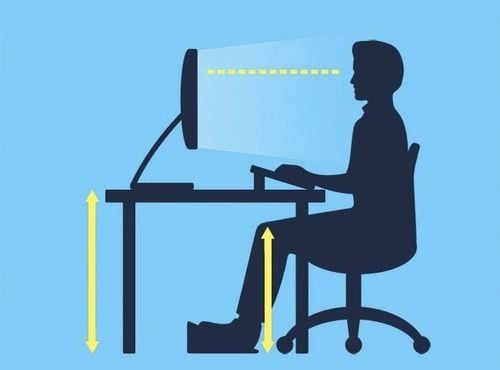
During this practice period, before each urgent need to be addressed, the patient can avoid using a variety of suggested techniques such as:
Sitting upright in a hard chair Distracting yourself by count down to 100, do a crossword or read a book, watch TV Stand cross-legged or on tiptoes Practice contracting your pelvic floor muscles, which helps prevent urgency and incontinence In addition, the need to urinate depends on Depends on the amount of fluid ingested and the type of fluid. There are a number of beverages that can irritate the bladder and should be avoided or consumed in moderation, such as caffeinated beverages such as tea, coffee, carbonated drinks, artificial sugars such as those for dieters, hot chocolate, ale, mint, black currant or citrus fruit juice. In contrast, beverages that do not irritate the bladder are water, non-caffeinated beverages, milk or diluted fruit juices.
In short, the human bladder can hold up to 500ml for each urination. However, urination habits depend on many different factors, not just bladder volume. Accordingly, each person needs to have a way to control the bladder, form a reasonable circadian rhythm during the day to limit the impact on life and work
Periodic health check-up helps to detect diseases early, from that has a treatment plan that achieves optimal results. Currently, Vinmec International General Hospital has general health checkup packages suitable for each age, gender and individual needs of customers with a reasonable price policy.
The patient's examination results will be returned to the home. After receiving the results of the general health examination, if you detect diseases that require intensive examination and treatment, you can use services from other specialties at the Hospital with quality treatment and services. outstanding customer service.
Please dial HOTLINE for more information or register for an appointment HERE. Download MyVinmec app to make appointments faster and to manage your bookings easily.






